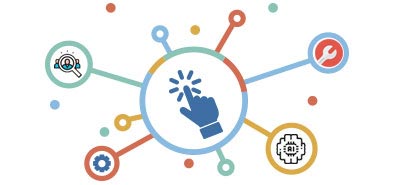What is Cloud Threat Detection and Response? A Guide
In 2019, Capital One faced a huge data breach because of a small mistake in its cloud setup. Over 100 million customer records were exposed. What’s surprising is that the company’s own security tools didn’t catch it. It was done by an ethical hacker. This real-life incident shows how important it is to have a smarter Threat detection system.
Businesses need tools that can find mistakes, suspicious activity, or hidden threats in real time, before anything serious happens. It clearly shows that cloud security is important and should never be ignored.
What is Thread Detection?
Threat detection is the approach of identifying rising cyber threats within a cloud environment by regularly monitoring network traffic, system activity, and user actions.
This is achieved through constant monitoring of network traffic, system behavior, and user actions. By analyzing patterns, detecting anomalies, and suspicious actions, organizations can spot signs of attacks, such as malware infections, data breaches, or hacked accounts, before they do major damage.
What is Cloud Threat Detection?
Cloud threat detection means finding cyber threats in real time by observing system records and activities. It leverages machine learning models to track and spot all unusual activities and threat patterns, and attacks.
This proactive approach is crucial for protecting sensitive data, ensuring compliance, and maintaining the overall security posture of modern cloud-based infrastructures.
What is Threat Response?
Threat detection means finding possible cyber threats, while threat response is about fixing them. This includes shutting down affected systems, removing harmful software, and getting things back to normal quickly to avoid major problems.
Types of Cloud Threats
Data Breach: A Data Breach is a threat that happens when someone gets access to personal and confidential information without permission. This can include bank records, personal details, and the company’s data. It may be possible in many ways, like fake emails, weak cloud security, or even trusted insiders can misuse their access.
Ransomware: Ransomware is a kind of harmful software that corrupts your files or computer and asks for money to unlock them. It often spreads via phishing emails, risky websites, or software vulnerabilities. After it takes over, it shows a message asking you to pay, often in cryptocurrency, to get your files back.
Insider Threats: Insider threats happen when someone inside a company, like a worker or contractor, causes a security problem, on purpose or by accident. Since they already have access to systems and data, it’s hard to notice when they do something wrong. That’s what makes insider threats so tricky to catch and stop.
Importance of Cloud Threat Detection
1. Protecting Sensitive Data: Effective threat detection and response start with protecting sensitive data like customer information, financial records, and intellectual property.
With proper monitoring in place, potential threats can be identified early and addressed before they arise. This proactive approach helps prevent costly incidents such as data breaches, identity theft, and fraud.
2. Meeting Legal Requirements: Industries today face strict data protection regulations such as GDPR in Europe and HIPAA in the U.S. implementing effective threat detection and response.
These tools are essential not just to prevent data breaches, but also to maintain compliance. It shows you take data protection seriously and helps you steer clear of hefty penalties, trust issues, and legal troubles.
3. Gaining Customer Trust: Trust is everything when it comes to handling someone’s personal data. Customers want to know if their information is safe with you. A strong threat response plan shows you’re prepared and proactive, which builds confidence and helps maintain a strong relationship with your customers.
4. Keeping Your Business Running: Cyber threats can quickly disrupt business operations, leading to downtime and lost productivity. But when threats are detected and resolved quickly, the impact is minimal. This means your business can keep running smoothly without any interruptions.
Common Threats to Cloud-Native Applications
While building great digital products is important, protecting your data is just as critical. If your organization uses cloud services, here are some common threats your security team should watch out for:
- Weak Access Controls
If too many users have broad access, sensitive data can easily fall into the wrong hands.
- Misconfigured Cloud Settings
Small setup mistakes can accidentally expose your data to the public or hackers.
- Zero-Day Vulnerabilities
Hackers target that software most which have flaws and has not been discovered or fixed.
- Shadow IT
Employees using unapproved apps or tools can weaken your security without realizing it.
- Cyber Threats Like Malware & Phishing
Attacks can come from malicious software, fake emails, or even trusted insiders.
- Human Errors in Deployment
Simple mistakes during updates or launches can open the door to security issues.
If these risks go unnoticed, they can lead to data leaks, system failures, revenue loss, or even legal trouble. That’s why many organizations rely on cloud threat detection tools to automatically monitor and respond to issues before they escalate.
What to Check for Cloud Threat Detection Systems
Finding the right cloud threat detection tool isn’t easy, it’s about getting a solution that truly fits your business needs. The best ones share these core strengths:
- Feasible Across Clouds: The tool should seamlessly integrate with your entire cloud ecosystem, whether you’re on AWS, Azure, Google Cloud, or all three.
- Real-Time Alerts: Continuous monitoring ensures your team is notified the moment something suspicious happens, whether day or night.
- One Clear View: A unified dashboard that gives you visibility across applications, data, users, and containers.
- Smart Analytics: Check for systems that filter noise and highlight real threats using behavior analytics and machine learning.
- Easy to Use: The tool should be simple to set up, quick to understand, and efficient to manage, even if you’re not a security expert.
Cloud Threat Detection Best Practices
Even the most advanced cloud threat detection tools won’t be effective without strong policies and smart practices behind them. To keep up with changing threats, businesses must act early and have a strong, strategic plan in place.
Here are the key practices to help you get the most value from your cloud threat detection setup:
- Be Proactive, Not Reactive: Schedule regular threat-hunting sessions, collect logs across your cloud infrastructure, and centralize them for analysis. Use automation to detect unusual patterns like unexpected downloads or disabled security settings, which may signal a threat. Even small actions can point to bigger risks. Always ensure your logging system is active and working properly.
- Adopt a Zero Trust Approach: Trust no one by default, not even your internal users. Grant access only to the systems and data employees need to perform their roles. Add secure verification steps like multi-factor authentication (MFA) and conduct periodic re-authentication to ensure continuous identity verification, especially during extended sessions.
- Test Your Defenses Often: You won’t know how effective your threat detection truly is until it’s tested. Run regular breach simulations and real-time practices to evaluate your system and team’s response. This not only exposes hidden gaps but also ensures you’re ready to face real-world attacks with confidence.
- Keep Security Policies Fresh: Whenever you introduce a new tool, platform, or device, update your security framework to reflect how it might be exploited. Review your overall security strategy at least once a year, and refresh it with new learnings, industry best practices, and tech stack changes.
Cloud Threat Detection and Response Beyond Key
At Beyond Key, we don’t follow old-school cloud security methods. Traditional tools look at the cloud from the outside and often react too late. Instead, our approach starts at the core, the actual workloads, and looks outward. This helps us spot threats in real time and respond much faster, keeping your cloud environment safer and more secure.
Features provided by Beyond Key
At Beyond Key, our Cloud Threat Detection and Response solution goes beyond the basics. We leverage behavioral fingerprinting, real-time posture monitoring, and identity-based context to detect unusual activity across cloud-native workloads.
Our platform integrates seamlessly with Kubernetes, Azure, AWS, and other environments, offering 24/7 monitoring, automated alerts, and actionable insights. With built-in analytics, access control audits, and centralized dashboards, Beyond Key empowers you to act swiftly before minor anomalies turn into major breaches.
Ready to strengthen your cloud security posture? Let’s talk.












